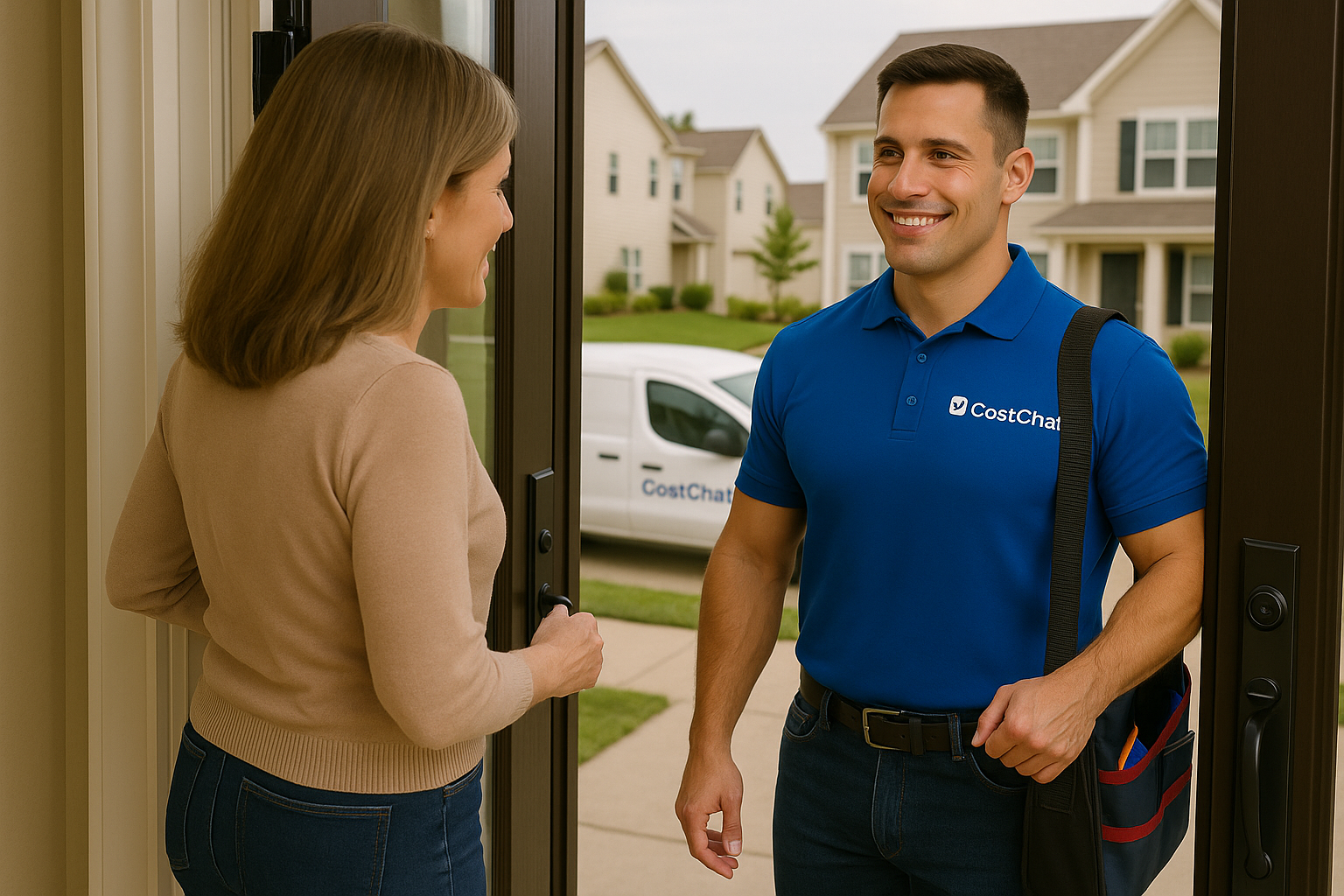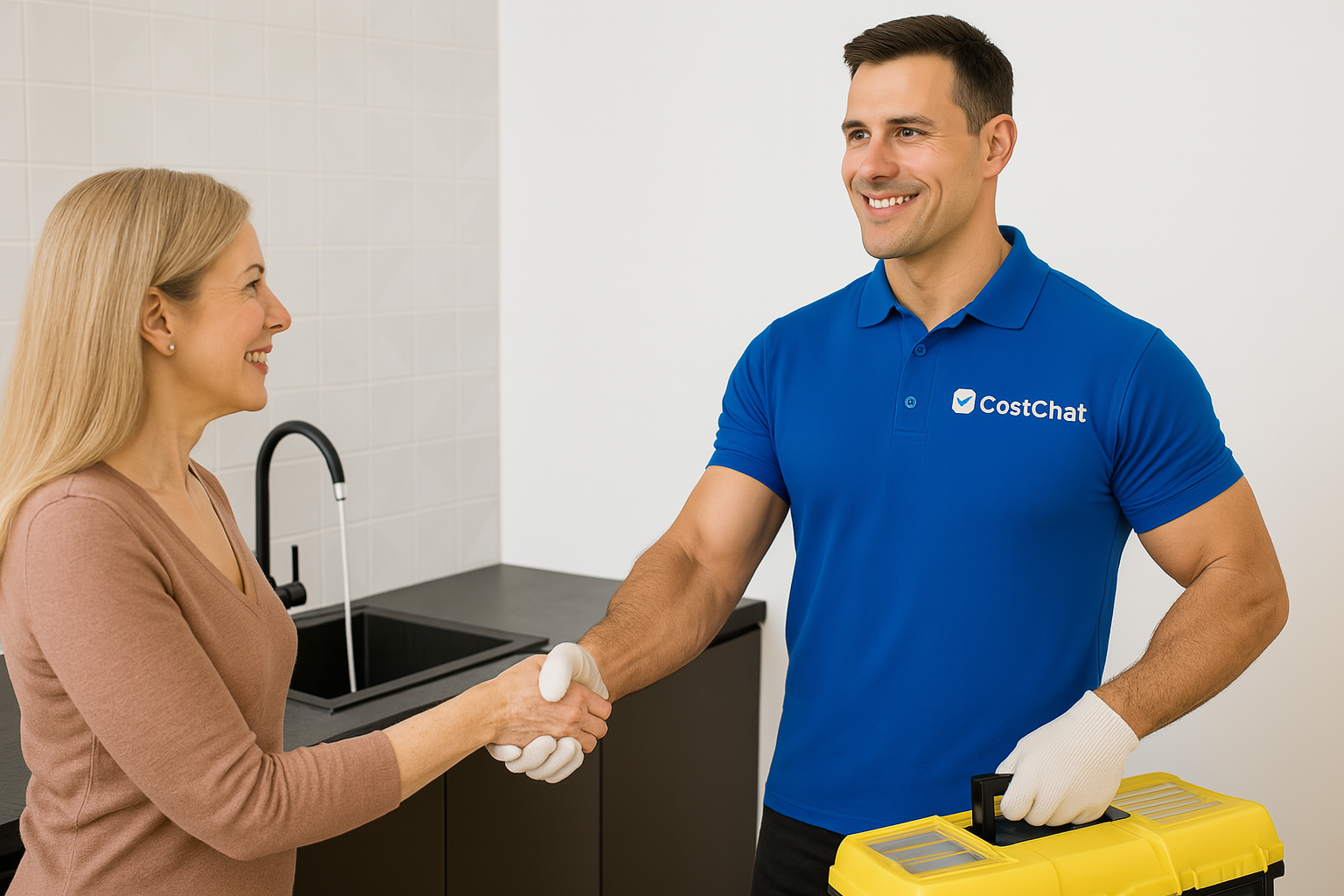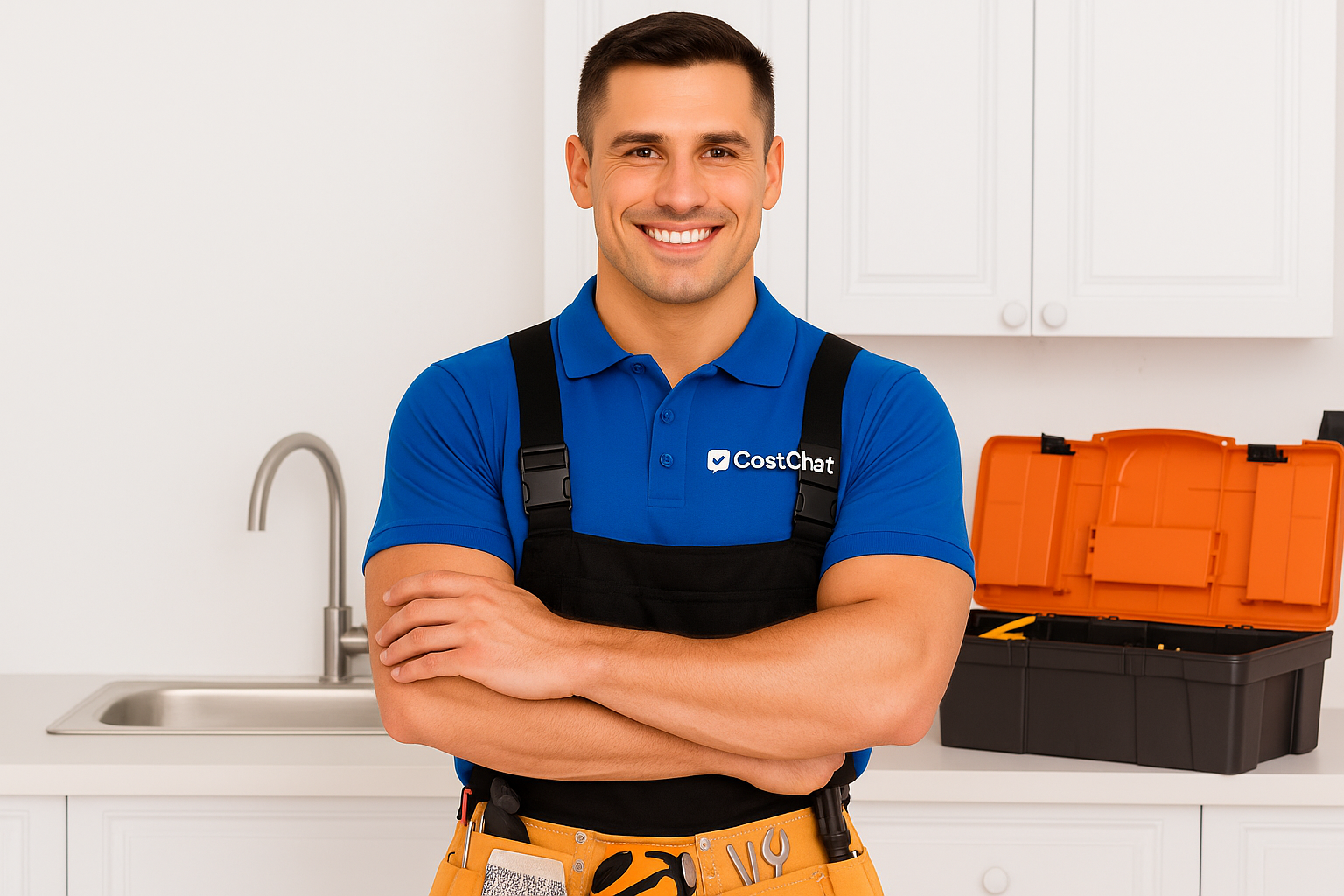
Fast, Reliable Backflow Testing Pros in Cincinnati, OH
How to Hire Top Rated Backflow Testing Pros in Cincinnati, OH
Get a Free Online Estimate
Share your project details and receive a free online estimate from top-rated local pros. Not sure what it should cost? Check our Cost Guide.
Get EstimateCompare Local Quotes
View multiple free online quotes side by side. Use our Price Guide to understand labor rates, materials, and service fees before you hire.
Compare NowBook Best Top Rated Pros
Choose a licensed pro with confidence. Lock in your date after reviewing your free estimate and browsing our expert Cost Guide for peace of mind.
Book NowDid You Know?
74% ⚠️
of homeowners face surprise costs and delays — mostly from hiring unvetted pros. Don’t risk it. Hire trusted experts today.
Hire Top Rated & Verified ProsWork With Verified & Trusted Pros 🛡️
Save time, avoid costly mistakes, and experience reliable, top-quality service for every home project. Book now for priority scheduling and peace of mind.
Hire a Top Rated ProGet Instant Online Estimate of Backflow Testing in
🔎 CostChat Online Cost Estimator
Describe your project and location to get an instant estimate.
Your Essential Guide to Backflow Testing in Cincinnati, OH
As a homeowner in Cincinnati, OH, you take pride in maintaining a safe, comfortable, and efficient home for your family. You understand that proactive maintenance is key, especially when it comes to your home's essential systems. When it comes to your water supply, ensuring its purity and safety from potential contamination is paramount. That's where understanding backflow testing comes in. This guide is designed to equip you with comprehensive, local insights to navigate the world of backflow prevention and testing right here in Cincinnati, OH.
Table of Contents
- Cincinnati's Unique Backflow Testing Landscape
- Neighborhood Hotspots for Backflow Concerns
- Common Problems & Triggers for Backflow Testing
- Navigating Cincinnati's Regulations for Backflow Testing
- Maximize Your Savings on Backflow Testing
- Choosing the Right Backflow Prevention Device
- Understanding the Cost of Backflow Testing in Cincinnati
- Hiring Cincinnati's Top Backflow Testing Professionals
- FAQs About Backflow Testing in Cincinnati, OH
Cincinnati's Unique Backflow Testing Landscape: Why Local Expertise Matters
The Age & Character of Cincinnati Homes: A Backflow Testing-Related Time Capsule
Cincinnati boasts a rich history, reflected in its diverse housing stock. With an estimated population of around 312,000 residents, many homes, particularly those in established neighborhoods, feature plumbing systems that have seen decades of service. Understanding the age and style of your Cincinnati home is crucial because older infrastructure can present unique challenges for backflow prevention.
- Early 20th Century Homes (Pre-1940s): Found in areas like Hyde Park and Mount Adams, these homes often showcase Craftsman bungalows and Colonial Revivals. Their original plumbing may include galvanized steel pipes, which are prone to corrosion and mineral buildup, potentially impacting water quality and pressure. This can create environments where backflow prevention is even more critical.
- Mid-20th Century Homes (1940s-1970s): Common in neighborhoods like Oakley, these post-war suburban homes might have original plumbing that, while perhaps updated from earlier materials, can still be nearing the end of its service life. Issues like aging fixtures or inadequate cross-connection protection might be present.
- Modern Homes (Post-1980s): Newer constructions generally adhere to more current plumbing codes, but vigilance is still necessary. Even modern systems can be vulnerable to cross-connections if not installed with proper backflow prevention devices.
The prevalence of older homes means that many Cincinnati properties may have plumbing systems that could benefit from inspection and upgrades to ensure optimal performance and safety, making regular backflow testing a vital part of home maintenance.
Cincinnati's Environmental & Utility Factors & Climate Impact on Your Backflow Prevention
Cincinnati's natural environment and its water utility play significant roles in the performance and necessity of backflow prevention systems.
- Water Source & Quality: Greater Cincinnati Water Works (GCWW) supplies water sourced from the Ohio River and the Great Miami Buried Valley Aquifer. While GCWW employs rigorous multi-stage filtration and treatment processes to ensure safe tap water, the sheer volume of surface water utilized means that maintaining consistent water quality and pressure is an ongoing effort. The water is classified as moderately hard, which can contribute to mineral scale buildup over time, potentially affecting plumbing components and the effectiveness of prevention devices if not properly maintained.
- Climate Considerations: Cincinnati experiences a humid continental climate with cold winters and warm, wet summers.
- Freeze-Thaw Cycles: Winter freeze-thaw cycles can put stress on all plumbing, including external fixtures and the backflow prevention devices themselves. Proper insulation and winterization are key.
- Seasonal Rainfall & Soil: The region's variable rainfall can lead to saturated soils, especially in areas prone to flooding near the Ohio River. Clay-heavy soils, common in many Cincinnati neighborhoods, can expand and contract with moisture changes, stressing underground pipes and potentially affecting the integrity of buried backflow devices or the systems they protect.
These factors underscore the importance of a properly functioning backflow prevention system to safeguard your home's potable water from potential contamination sources, especially given the city's infrastructure and environmental conditions.

Ensure your home's water is protected. Learn more about backflow testing services in Cincinnati, OH.
Request a QuoteNeighborhood Hotspots: Micro-Local Backflow Testing Risks & Solutions
Cincinnati's diverse neighborhoods each have their own character and, often, unique plumbing considerations that can influence backflow prevention needs.
- Historic Districts (e.g., Mount Adams, Hyde Park): Homes in these areas often feature older infrastructure, including potentially original cast iron pipes and galvanized steel water lines. The risk here includes increased susceptibility to leaks and blockages, which can exacerbate issues related to cross-connections. Solution: Regular inspections of visible plumbing and consideration for partial or full repiping with modern materials like PEX or copper, alongside consistent backflow testing, are recommended.
- Areas Near Waterways (e.g., Downtown, parts of East End): Homes in flood-prone areas may face greater risks from backflow events, especially if basement plumbing or sump pumps are involved. Submerged cross-connections can be a significant concern. Solution: Installing and regularly testing backflow prevention devices on water lines entering the property, especially in basements, is crucial. Flood mitigation measures for plumbing are also important.
- Older Suburban Areas (e.g., Oakley, parts of Norwood): While perhaps less historic than downtown areas, many homes built in the mid-20th century may have plumbing systems that are aging. This can include older sprinkler systems or irrigation setups that are common points of cross-connection. Solution: Ensure all irrigation systems have dedicated backflow preventers, and have them tested annually per local regulations.
Understanding the specific challenges of your Cincinnati neighborhood helps in prioritizing backflow testing and prevention efforts.
Common Problems & Triggers for a Professional Backflow Testing Call
Recognizing the signs that your backflow prevention device or system needs attention is key to protecting your home's water supply. For many plumbing components, including backflow preventers, their typical lifespan can vary significantly based on installation quality, water quality, and maintenance. However, many residential backflow prevention assemblies are designed to last between 10-20 years with proper care and regular testing. Signs that may indicate a problem include:
- Water Pressure Fluctuations: A sudden or intermittent drop in water pressure could indicate a blockage or malfunction within your backflow preventer, or a leak elsewhere.
- Discolored or Unusual Tasting Water: While often indicative of other plumbing issues, changes in water quality can sometimes be linked to a compromised backflow prevention system allowing contaminants into your potable water supply.
- Leaking from the Device: Backflow preventers have relief valves that may discharge water if a backpressure or backsiphonage event occurs. If the device is constantly leaking, it may be malfunctioning and require service or replacement.
- Failure During Testing: Backflow prevention assemblies are typically required to be tested annually by certified professionals. If a device fails this test, it's a direct indicator that it's not functioning correctly and needs immediate attention.
- Visible Corrosion or Damage: Inspecting the device for any signs of rust, corrosion, or physical damage can alert you to potential issues.
For any plumbing emergency, it's important to know what to do. Learn more about handling plumbing emergencies in our What to Do in an Emergency guide.
Don't wait for these issues to become major problems. Familiarize yourself with the early warning signs by reviewing our comprehensive Warning Signs guide.
 Get Expert Help
Get Expert Help
Navigating Cincinnati's Regulations: Permits, Code & Professional Licensing
Adhering to local regulations is vital for all plumbing work, including backflow prevention system installation and testing in Cincinnati, OH. This ensures safety and compliance.
- Permitting Process: Significant plumbing work typically requires permits. For backflow prevention device installations or replacements, you'll likely need to consult the Cincinnati Building and Inspections Department. You can find information and apply for permits through the City of Cincinnati's Official Website.
- Governing Code: Cincinnati adheres to the Ohio Plumbing Code, which is largely based on the International Plumbing Code (IPC). Local amendments are in place to address specific regional concerns, such as frost protection for plumbing systems.
- Required Inspections: Depending on the scope of work and local ordinances, inspections may be required after installation or repair of backflow prevention devices to ensure they meet code requirements and are functioning correctly.
- DIY vs. Professional Installation: While some minor plumbing tasks might be suitable for DIY, backflow prevention system installation and testing are specialized tasks. These systems are critical for public health, and incorrect installation or testing can lead to contamination or system failure. Professionals ensure compliance with strict codes and proper device function. Learn more about when DIY might be an option in our When to Consider DIY guide.
- Contractor Licensing: Plumbers performing this work must be licensed by the Ohio Construction Industry Licensing Board (OCILB). Homeowners can verify a plumber's license status through the Ohio Department of Commerce or OCILB online license lookup portals. Always ensure your chosen professional is licensed and insured for work in Cincinnati, OH.
Maximize Your Savings: Cincinnati Backflow Testing Rebates & Incentives
Investing in backflow prevention and regular testing is crucial for home safety, and there may be opportunities to save money. While specific rebates can change, keep an eye on programs that encourage water conservation and infrastructure protection.
- Local Utility Programs: Check with Greater Cincinnati Water Works (GCWW) for any current or upcoming rebates on water-saving devices or plumbing upgrades that might indirectly relate to water efficiency and system health. You can find details on their website: Greater Cincinnati Water Works.
- State and Federal Initiatives: The Ohio EPA and other state agencies occasionally offer incentives for water conservation or lead service line replacement, which could sometimes be bundled with broader plumbing upgrades.
- Bonus Tip: Strategic timing can lead to savings. Consider scheduling backflow testing or related plumbing upgrades during off-peak seasons if possible, or when other exterior plumbing work is being done, to potentially bundle costs.
For more ways to reduce costs on home services, explore our Saving Tips guide.
 Get Your Quote Today
Get Your Quote Today
Choosing Your Cincinnati Backflow Prevention Device: Models, Sizing & Smart Features
Selecting the right backflow prevention device is critical, as different types are suited for different applications and levels of risk. For Cincinnati homeowners, understanding these options and considering local factors is key.
- Types of Backflow Preventers:
- Atmospheric Vacuum Breakers (AVBs): Commonly used for irrigation systems. They prevent backflow by creating an air gap. Pros: Relatively inexpensive. Cons: Not suitable for submerged or continuous pressure applications.
- Pressure Vacuum Breakers (PVBs): Also suitable for irrigation, PVBs are more robust than AVBs. Pros: Offer reliable protection. Cons: Require installation above the highest outlet.
- Reduced Pressure Zone (RPZ) Devices: These are the most comprehensive and widely used for higher-risk applications, including entire homes or businesses. Pros: Highly effective at preventing backflow under various conditions. Cons: More expensive and require annual testing.
- Double Check Valve Assemblies (DCVAs): Used for lower-risk applications. Pros: Simpler design. Cons: Offer less protection than RPZ devices.
- Sizing and Application: The appropriate device size and type depend on the specific connection point and the potential hazard. For whole-house protection in Cincinnati, an RPZ device is often recommended. For irrigation systems, AVBs or PVBs are typical. A qualified professional can assess your needs and recommend the correct device.
- Key Installation Considerations for Cincinnati Homes:
- Accessibility for Testing: Ensure the installed device is easily accessible for annual testing and maintenance.
- Protection from Freezing: In Cincinnati's climate, consider insulating or protecting devices in exposed areas from freezing temperatures.
- Local Code Compliance: Always ensure the chosen device and installation method meet the Ohio Plumbing Code and any specific Cincinnati city ordinances.
Understanding the Cost of Backflow Testing in Cincinnati
The cost of backflow testing in Cincinnati, OH, can vary depending on several factors, including the type of device, its location, and the professional performing the service. Here's a general breakdown:
- Testing Fee: The cost to have a certified professional test your existing backflow prevention device typically ranges from $75 to $150. This fee usually includes the visual inspection, the testing procedure, and submitting the necessary paperwork to the local water authority.
- Repair Costs: If your backflow preventer fails the test or shows signs of wear, repairs can range from $100 to $400+, depending on the specific part that needs replacing (e.g., O-rings, check valves, relief valves).
- Replacement Costs: If the device is old, severely damaged, or no longer meets code, replacement may be necessary. The cost for a new backflow preventer (including parts and labor) can range from $300 to $800 or more for common residential RPZ devices.
- Factors Influencing Cost:
- Type of Device: RPZ devices are generally more expensive to test and replace than simpler assemblies like AVBs.
- Location of Device: If the device is in a hard-to-reach area (e.g., buried, in a tight crawlspace), labor costs may increase.
- Contractor's Rates: Hourly rates for certified backflow technicians can vary.
- Neighborhood: While less common for testing, significant plumbing work in certain prime Cincinnati neighborhoods might sometimes reflect higher labor costs.
These figures are estimates. It's always recommended to obtain multiple detailed quotes from licensed and certified professionals to ensure you're getting fair pricing for quality service.
 Request a Quote
Request a Quote
Hiring Cincinnati's Top-Rated Backflow Testing Professional: Your Action Plan
Choosing the right professional for your backflow testing and prevention needs in Cincinnati, OH, is crucial for ensuring compliance, safety, and peace of mind. Here’s a step-by-step action plan:
- Verify Licensing and Insurance: Always confirm that the professional is licensed by the Ohio Construction Industry Licensing Board (OCILB) and carries adequate liability insurance. You can verify licenses through the Ohio Department of Commerce website.
- Seek Local Specialists: Look for plumbers or companies that specifically advertise backflow testing services and have a strong presence in Cincinnati, OH. Local professionals are familiar with GCWW requirements and local code nuances.
- Ask Hyper-Local Questions:
- "Are you familiar with the specific backflow testing requirements set by Greater Cincinnati Water Works?"
- "What is your experience with the types of plumbing systems common in historic Cincinnati neighborhoods like [mention your neighborhood]?"
- "How do you handle potential freezing of backflow devices during Cincinnati winters?"
- "What is your process for submitting test results to the city or water department?"
- Check Reviews and References: Look for online reviews on platforms like Google, Yelp, or Angie's List. Ask for references from past clients in your area.
- Obtain Multiple Detailed Quotes: Get written estimates from at least three different professionals. Ensure the quotes clearly outline the scope of work, parts used, labor costs, and warranty information.
- Review the Contract Carefully: Before signing anything, ensure the contract is detailed, specifying the exact device, warranty terms, timeline, and total cost.
Avoid common hiring mistakes by consulting our Mistakes to Avoid guide.
Neighborhoods We Serve in Cincinnati, OH
️ Top Neighborhoods:
- Downtown
- Over-the-Rhine
- Mount Adams
- Clifton
- Corryville
- Hyde Park
- Walnut Hills
- East Walnut Hills
- Mount Lookout
- Mount Washington
- Avondale
- Northside
- College Hill
- Pendleton
- West End
Top ZIP Codes Covered:
- 45202
- 45203
- 45204
- 45205
- 45206
- 45207
- 45208
- 45209
- 45211
- 45212
- 45213
- 45214
- 45216
- 45219
- 45220
Wherever you’re located in Cincinnati, OH, our team of trusted local pros is nearby—ready to deliver fast, reliable, and top-rated service. Whether you’re in the heart of downtown or a quiet suburb, we’ve got you covered.
FAQs About Backflow Testing in Cincinnati, OH
In Cincinnati, OH, most backflow prevention devices, particularly those protecting your main water supply or irrigation systems, are required to be tested annually by a certified professional. Greater Cincinnati Water Works (GCWW) mandates this to ensure public health and safety.
If your backflow preventer fails a test, it means it's not functioning correctly and must be repaired or replaced promptly. You will typically be given a timeframe to have the issue resolved and the device re-tested. Failure to do so could result in your water service being disconnected until the problem is fixed.
